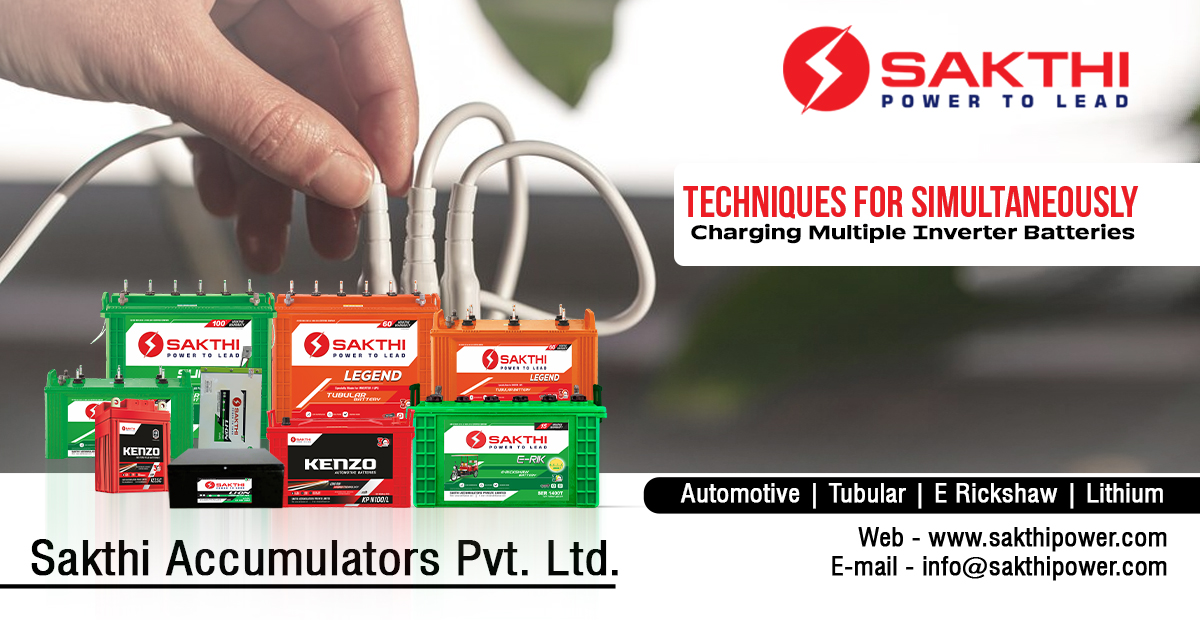Sakthi Inverter Batteries are recognized for their sustained performance, dependability, and capability to supply continuous power in the event of grid outages. Whether powering your business or home, these batteries are engineered to deliver a seamless and undisturbed power supply. But like any battery, Sakthi Inverter Batteries need proper maintenance to perform optimally. One important aspect of battery maintenance is ensuring that the water level is correct. In this blog, we’ll dive into the science of how inverter batteries work and why they need water to keep running efficiently.
Why Does an Inverter Battery Requires Water?
Inverter batteries, particularly lead-acid batteries, depend on a combination of sulfuric acid and water to operate. The water within the electrolyte serves to preserve the chemical balance of the battery. When charging and discharging, water from the electrolyte evaporates, causing a drop in the water level. This drop of water levels may affect the efficiency and lifespan of the battery. Here’s why water is crucial:
Avoids Sulfation
With the decreasing water level, there is a rise in sulfuric acid concentration, which may result in the precipitation of lead sulfate crystals on the plates of the battery. Sulfation decreases the efficiency of the battery and may result in long-term permanent damage.
Maintains Electrolyte Balance
We put water in the battery to maintain the ratio of acid to water. Acid-to-water ratio is very essential to the operation of the capability of the battery to charge and discharge. If there is not enough water, the battery will not operate and may reduce the battery life significantly.
Maintains Protection of Plates
When water level is below par, the battery plates get exposed to air and dry out. This leads to lower capacity and eventually the death of the battery.
How to Add Water in Your Inverter Battery?
It is extremely simple to maintain the right water level in your inverter battery, but one must ensure to do it with caution so as not to do any damage. Here’s how to do it:
Inspect the Water Level:
Open the battery compartment and inspect the level of electrolyte. The water should cover the lead plates but not be over it. In case of low water level, the time has arrived to add some distilled water.
Use Distilled Water:
Always top off with distilled water, as the minerals in tap water can harm the internal parts of the battery. Never put sulfuric acid into the battery; simply use water to bring the electrolyte level up to the correct level.
Top Up Slowly:
Gradually refill the battery with the distilled water to the proper level. Don’t overfill the battery, as this can cause spillage when the battery is being used.
Check Periodically:
Daily check on the water levels, particularly if the battery is frequently used. Water levels must be checked at least once in every two months to maintain the maximum performance of the battery.
Conclusion
Maintenance of your inverter battery on a regular basis, like filling water when necessary, is essential to make your inverter battery function efficiently and also for a longer duration. By keeping the appropriate amount of water, you prevent sulfation, maintain the electrolytes at equilibrium, and prevent the battery plates from getting damaged. With proper maintenance, your inverter battery will keep supplying power at the time when you need it the most.
If you are looking for good inverter batteries, Sakthi Inverter Batteries offer durable and long-lasting products for all your energy storage needs. Both for residential and business purposes, our batteries are designed to keep running your systems with the highest efficiency and smoothness. Contact us today to learn more about our range of inverter batteries that are meant to energize your home with ease.






